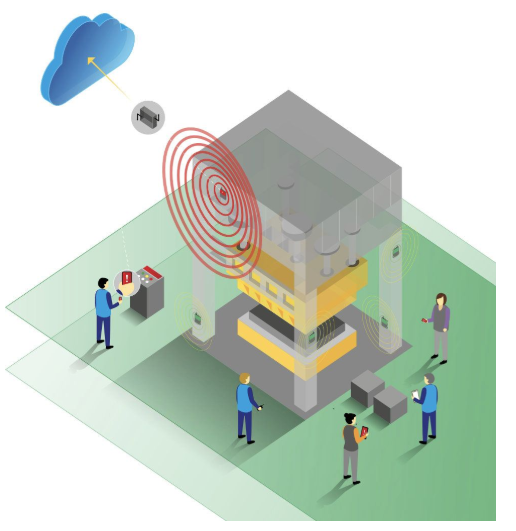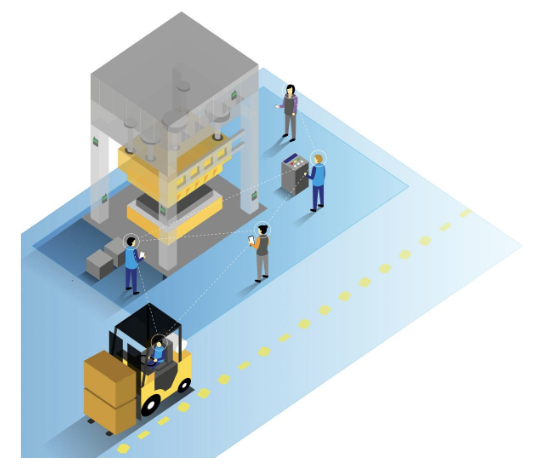Article provided by Sensai
While manufacturers around the world have reached new heights in technology adoption and equipment innovation, there are still many pain points that hinder optimization, efficiency and even safety on the plant floor. Sensai, an augmented productivity platform for manufacturing operations, unveiled a list of the top five plant floor risks that reduce efficiency, drain productivity and negatively impact business results if left unattended.
These insights are based on the combined manufacturing industry expertise within Sensai’s leadership team, as well as insights from its current pilot programs at organizations in the manufacturing industries, including those in automotive, construction materials, consumer goods and more.

Images courtesy of Sensai
“Industry 4.0 is making the plant floor much smarter than ever before. But that is not to say that automation, data exchange, IIoT and cloud computing can manage itself. Companies need to focus their efforts on identifying and addressing pain points and engaging their workers in the change process to bridge an understanding of what must be done to realize the full potential of these innovative technology solutions,” said Porfirio Lima, CEO of Sensai.
The top five issues impacting manufacturing operations today include:
1. Catastrophic Equipment Failures
When an organization has to delay or shut down operations due to aging or failed machines, this can have a serious impact on the safety of employees and bottom line of the business. Further, in order to continue producing at the pace the market demands, companies may have to outsource repairs and production volume, which can be extremely costly. Overall, legacy equipment can sometimes be a hindrance for manufacturers and the success of digital transformation due to the complexity of changeovers, and access to data.
2. Data Collection and Mining
For factories to be effective, information regarding inventory, supply, deliveries, quality, production, customer support, processing and day-to-day management must all be analyzed, monitored and updated on a daily basis. Of extreme importance to the business decisions often needs to be made using a comprehensive range of data from the production floor, to spreadsheets and clipboards. Without an efficient system in place, operations managers and their teams waste a large amount of time searching for the necessary information vital to making critical business decisions. This is a hidden waste that most people are not even aware of.

3. Information Reliability
As important as it is to centralize the data, it is even more important that the data is accurate. If the data is not reliable, companies may end up choosing the path of most resistance, resulting in wasted or misused resources and a complex operational process. Manual data entry is prone to human error, which can lead to poor business decisions that stem from misleading information. With facilities that are both robotic and manual, operations must still pay close attention to the actionable data as it comes in, which means there is an additional layer of complexity. Calculating inaccurate KPI data is something that continues to haunt many production managers today. With the right technology in place using accurate data, decisions can be made more effectively and efficiently.
4. Slow Onboarding and Knowledge Loss
When new employees are hired, there is often a steep learning curve, requiring numerous hours of coaching, training and shadowing veteran employees. However, many companies do not have the internal resources to properly train and onboard individuals, increasing the likelihood of operational errors, unapproved work-arounds and more. Alternatively, when organizations lose top talent to a competitor or retirement, those years of experience walk out the door with them. Depending on the existing management protocol, both can impact the efficiency and productivity level of an entire company.
5. Process Control
The complex relationship between a machine’s health, the processes’ parameters and the material’s conditions, all have a tremendous impact on a manufacturer’s final product. When any of these elements are not working correctly, it can be detrimental to productivity. Having the correct process in place to analyze and create robust models gives guidance to operators as to where to act to optimize performance, quality and uptime. Machine Learning enables smart process controls, so that corrections can be made automatically and even autonomously considering all the critical and relevant variables.
“As manufacturers are constantly facing challenges from every angle, it is imperative that the industry also pivots accordingly, developing and ultimately implementing powerful predictive and prescriptive technologies for operations at a much faster rate. Sensai’s platform is designed with a holistic approach so that productivity on the plant floor can easily be seen, measured and augmented. It is Sensai’s mission to motivate organizations and their employees with a system that is easy to implement, rewarding and accurate, and most importantly enables humans unlimited potential to be augmented,” Lima said.
Related Glossary Terms
- process control
process control
Method of monitoring a process. Relates to electronic hardware and instrumentation used in automated process control. See in-process gaging, inspection; SPC, statistical process control.
